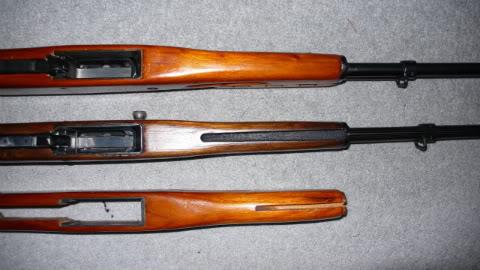
#SKS RIFLE SERIAL NUMBER LICENSE#
Throughout the Cold War, millions of additional SKS carbines and their derivatives were also manufactured under license in the People’s Republic of China, as well as a number of countries allied with the Eastern Bloc. The SKS was manufactured at Tula Arsenal from 1945 to 1958, and at the Izhevsk Arsenal from 1953 to 1954, resulting in a total Soviet production of about 2.7 million carbines.

Nevertheless, SKS carbines continued to see service with the Soviet Border Troops, Internal Troops, and second-line and reserve army units for decades. As the SKS lacked select-fire capability and its magazine was limited to ten rounds, it was rendered obsolete in the Soviet Armed Forces by the introduction of the AK-47 in the 1950s. Its distinguishing characteristics include a permanently attached folding bayonet and a hinged, fixed magazine. A reliable, simply designed, and relatively inexpensive weapon, the SKS was first produced in the Soviet Union but later widely exported and manufactured by various nations. The SKS ( Russian: Самозарядный карабин системы Симонова, romanized: Samozaryadny Karabin sistemy Simonova, 1945, Self-loading Carbine of (the) Simonov system, 1945) is a semi-automatic carbine chambered for the 7.62×39mm round, designed in 1943 by Sergei Gavrilovich Simonov. Hooded post front sight, tangent notch rear sight graduated from 100 to 1,000 meters.


Short stroke gas piston, tilting bolt, self-loadingġ0 round stripper clip, internal box magazine. SKS Carbine from the collections of Armémuseum, Stockholm, Sweden


 0 kommentar(er)
0 kommentar(er)
